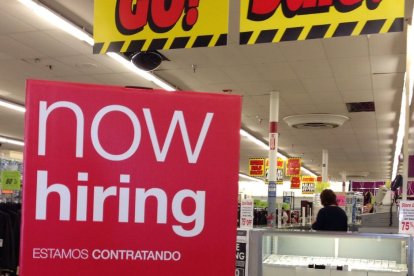The hidden reality behind the new employment report data
Part-time jobs increased by 71,000, while full-time jobs fell by 380,000, according to the Labor Department.

(Flickr)
At first glance, the employment report for the month of July seems to be good news for the U.S. economy. However, the specific figures may reveal some not-so-beneficial data.
Unemployment fell to 3.5% and, there was an increase of 528,000 jobs in July, according to figures released by the Bureau of Labor Statistics. The key to the high number of new jobs that is not being discussed by the White House is that a large share of Americans are taking on more part-time jobs. In other words, while the overall figures appear encouraging, the hidden reality is that most positions are not full-time and are a result of more families seeking out additional sources of income to offset inflation.
Inflation as a determining factor
Runaway prices and inflation have hit their highest levels in over four decades meaning citizens' have seen a decline of 3.6% in their real median income over the past 12 months according to the Labor Department. Furthermore, a new report from the American Consumer Institute's Center for Citizen Research reveals that inflation will cost families $4,400 this year alone. Many people need extra money just to pay basic expenses such as food and utility bills. The data highlights that from June to July, full-time jobs fell by 71,000, while part-time jobs increased by 384,000 according to Labor Department data.
Beyond the additional second jobs, the jobs report also reveals a decline in the labor force participation rate. The figure fell to 62.1% in July, reflecting 623,000 Americans below the level observed in 2020. According to the American Action Forum, had the figure held, there would be 2.6 million more workers in the labor force.
Applause from the White House and revenue cuts for citizens
President Biden used the jobs report as evidence that his economic policies are working. According to an
Rising job numbers could lead people to believe that the economy is not in or on the verge of a recession, even though the U.S. is experiencing two consecutive quarters of negative economic growth.
However, according to a recent Harvard CAPS/Harris survey, 70% of citizens surveyed think their financial situation is getting worse. And according to a recent report by LendingClub Corporation, the number of Americans living day-to-day increased to 61% so far in 2022.
RECOMMENDATION





















